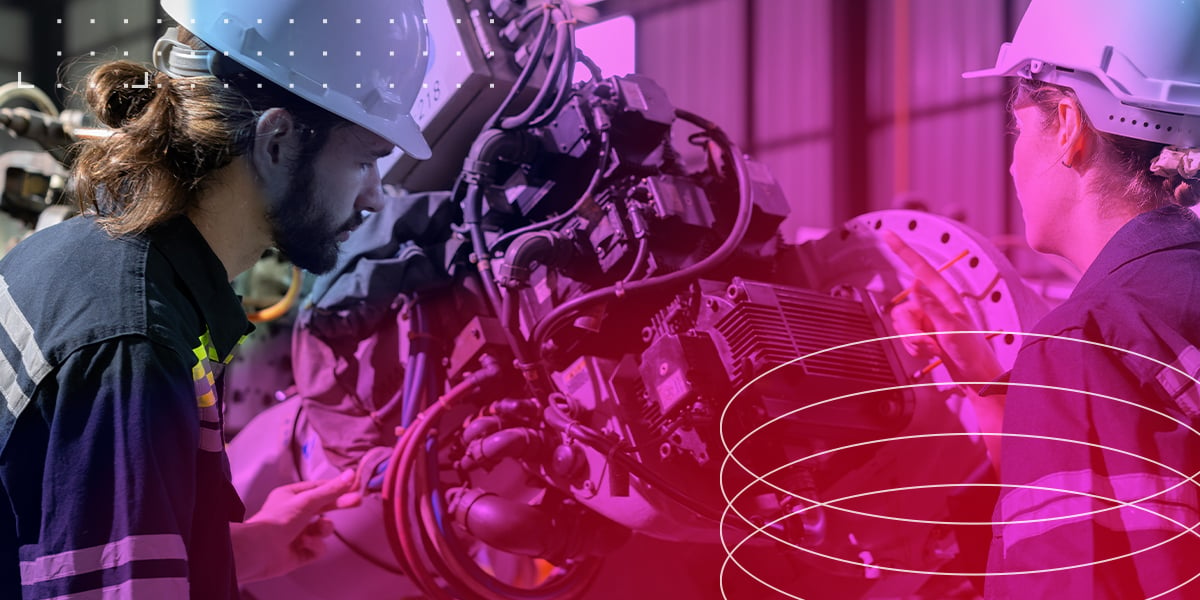The transition from Industry 4.0 to Industry 5.0
The industrial landscape is on the verge of yet another transformative shift, as we witness the transition from Industry 4.0 to Industry 5.0, also referred to as Fourth and Fifth Industrial Revolution. As their name suggests, they’re not the first ones the world has experienced over the years.
How did we get to Industry 5.0?
The First Industrial Revolution took place at the end of the 18th century with the introduction of the steam engine invented by James Watt. The Second one started around the end of the 19th century, with the major breakthrough of electricity harnessed for industrial use. The middle of the 20th century saw the Third Industrial Revolution, in which the first computerized processes for industrial machines were introduced in factories. This was the starting point of a progressive automation process that led to the Fourth Industrial Revolution, or Industry 4.0, a term which mainly refers to the emergence of smart factories.
If the era of Industry 4.0 has been characterized by unprecedented technological innovations and advancements, Industry 5.0 - the new economic paradigm that has been gaining momentum in the past few years - is now redefining, yet again, the way we perceive and interact with technology in the industrial sector.
So what changes, exactly, between Industry 4.0 and the emerging Industry 5.0?
The key technologies of Industry 4.0
The expression “Industry 4.0” was coined in Germany, precisely at the Hannover Fair held in 2001, during which the emerging technologies aimed at enhancing and innovating the productivity of german factories were presented. These disruptive technologies – defined Industrie 4.0 - regarded the implementation of automized and integrated systems into manufacturing processes.
In short, Industry 4.0 refers to an automated system capable of collecting and analyzing data related to industrial processes and using this information to make smart decisions. This is made possible by the constant monitoring and controlling of the performances by digital and smart systems, which have a constant real time access to data at every step of the process. It is precisely for this reason that academics also refer to Industry 4.0 as the Digital Revolution.
The four main technologies related to Industry 4.0 are:
- IoT and Connectivity: devices and systems are interconnected to enable seamless communication and data exchange;
- AI and Machine Learning: advanced analytics and machine learning algorithms enhance decision-making and predictive maintenance;
- Automation: robotics and autonomous systems are deployed to streamline processes and reduce human intervention;
- Big Data Analytics: Massive datasets are analyzed to extract valuable insights, optimizing production and supply chain management.
The shift towards Industry 5.0: the human touch
Industry 5.0 represents a paradigm shift that places a renewed emphasis on human collaboration with technology. While Industry 4.0 focused on automation and data-driven decision-making, Industry 5.0 moves beyond the purely automated and data-driven approach of its predecessor and seeks to integrate the unique capabilities of both humans and machines, creating a harmonious relationship.
The human-centric approach is hence what distinguishes Industry 5.0 from Industry 4.0: unlike the fully automated nature of the latter, in fact, the former recognizes the importance of human skills, creativity and emotional intelligence. In this new paradigm machines and humans work side by side, with collaborative robots (cobots) assisting and augmenting human capabilities rather than replacing them. Moreover, while data analytics remain crucial, Industry 5.0 decentralizes decision-making, empowering individual workers and teams to make informed choices.
The new era of Industry 5.0
The transition from Industry 4.0 to Industry 5.0 represents a paradigm shift in our approach to industrial processes. By embracing the collaborative potential of human-machine cooperation, Industry 5.0 aims to redefine the manufacturing landscape, creating more adaptable, sustainable, and human-centric industries that not only drive economic growth but also contribute positively to society and the environment. This rediscovered emphasis on the human-machine partnership promises to unlock unprecedented levels of innovation and productivity in the industrial landscape.



